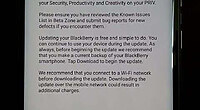Microsoft announced in January that their Research Division was in the process of developing a secondary screen for their Lumia smartphones that had an e-ink screen. It looks like they are making some serious headway because they have just posted a new video that demonstrates how the technology works.
Microsoft outlined the technology in a statement “FlexCase is a novel flip cover for smartphones, which brings flexible input and output capabilities to existing mobile phones. It combines an e-paper display with a pressure- and bend-sensitive input sensor to augment the capabilities of a phone. Due to the form factor, FlexCase can be easily transformed into several different configurations, each with different interaction possibilities. We can use FlexCase to perform a variety of touch, pressure, grip and bend gestures in a natural manner, much like interacting with a sheet of paper. The secondary e-paper display can act as a mechanism for providing user feedback and persisting content from the main display.
In this paper, we explore the rich design space of FlexCase and present a number of different interaction techniques. Beyond, we highlight how touch and flex sensing can be combined to support a novel type of gestures, which we call Grip & Bend. We also describe the underlying technology and gesture sensing algorithms. Numerous applications apply the interaction techniques in real-world examples, including enhanced e-paper reading and interaction, a new copy-and-paste metaphor, high degree of freedom 3D and 2D manipulation, and the ability to transfer content and support input between displays in a natural and flexible manner.”
Michael Kozlowski is the editor-in-chief at Good e-Reader and has written about audiobooks and e-readers for the past fifteen years. Newspapers and websites such as the CBC, CNET, Engadget, Huffington Post and the New York Times have picked up his articles. He Lives in Vancouver, British Columbia, Canada.

